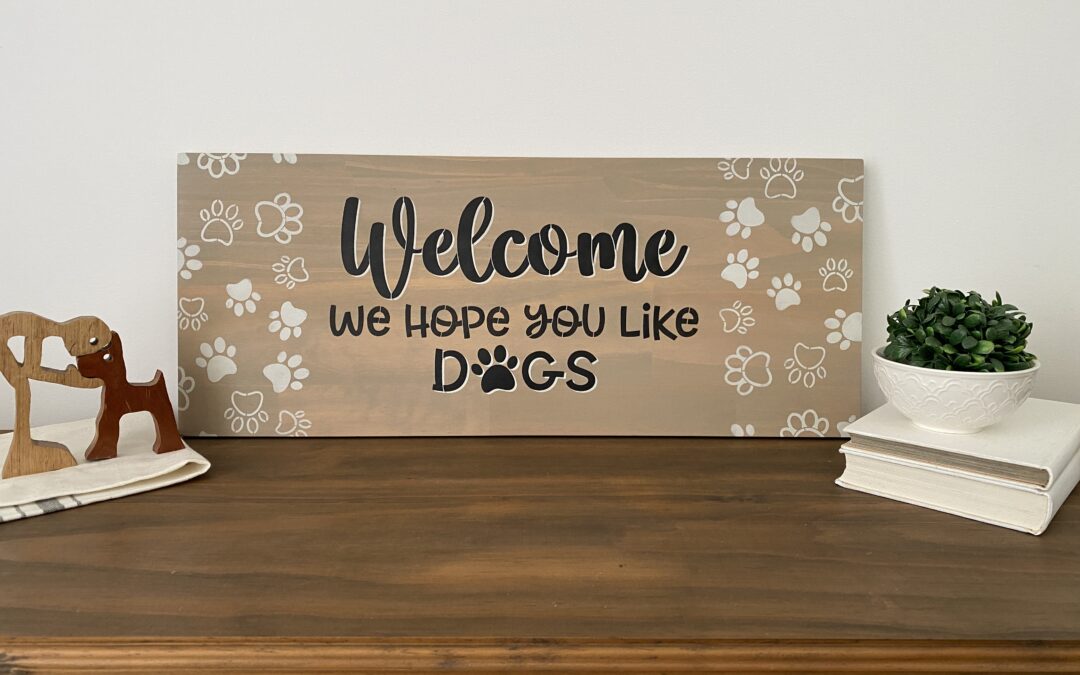Looking for a light tan toned wash for your next furniture project?
Creating a stain wash with any water based paint is easy to do. During a Facebook live I did on my page this week for Essential Stencil using their adorable stencils, I shared a quick tutorial on how to create a stain wash on the large sign board I was using.
In the world of painting with Fuson Mineral Paint right now, there’s a popular wash going around using the colour Algonquin. But in Australia, as of this writing, we are out of stock until our next shipment comes in. But I want to encourage you, that you can effectively create a very similar wash with very similar results using combinations of other colours! Just give it a go.
Fact:
When creating a stain wash with paint, it’s important to keep in mind, that painting any wash on a piece of furniture can have so many varying results depending on a number of factors:
-
- Is the piece raw wood? A different colour wash will result on a piece of raw blonde wood, versus a piece that still has a slight colour of residual stain within the grain.
- What type of wood is the wash going on? A different colour wash will result on a piece that is blonde pine, versus a piece that is made with oak or walnut.
- How old is the piece? Similar to point 1, if a piece has been stripped back to raw wood, older pieces may show darker than newer pieces, resulting in a different wash colour finish.
Watch the video below, then refer back to the top here to see the ratios and methods I recommend. There are several ways to create and apply a paint wash or stain, and there’s really no better way than the other, it is just a matter of preference. I find myself using different methods on different pieces I’m working on.
Tips for mixing two colours to create a stain/wash:
-
- In the video I used 2 parts Wood Wick to 1 part Cobblestone (an off white) in an attempt to get a colour close to the Algonquin wash that customers have been wanting to use this colour for. Another retailer friend tried 2 parts Wood Wick to 1 part Champlain, and her results are even closer to the Algonquin look, so I’d also give that a try.
- Play with your ratios until you are happy with the look on a tester board that is similar in tone to the piece you’ll be working on. I will sometimes test on an inconspicuous part of the piece, like under a table surface or back of a cabinet.
- Once you have mixed your correct ratios of paint, you can add water to create a wash. The water to paint ratio to create a wash can be 50:50, to create a strong wash, or water down even further using a 80:20 water:paint ratio for a lighter wash. (In the video demo, I didn’t add water in this step, but added water using a misting bottle to move the wash along the grain.)
Methods for Application of the wash:
Any of these ways work well, you will find a method that works best for you. As I said, I have used them all and seem to use different methods every time I apply a wash.
-
- Using an applicator sponge, dip it into the stain/wash and apply in long even strokes along the grain. Remove any excess with a dry part of the spong/applicator. This method can be used either with water added or without. Remember with water, you’ll get a lighter wash, without water, you’ll get a stronger colour stain.
- Using a flat brush, dip it into the stain/was and apply along the grain. Remove excess with a lint free sponge/appicator along the grain.
- Using a misting bottle, wet the surface of the wood before dipping the brush or applicator into the paint. The misting bottle can be used in the entire process to water the paint down as opposed to adding the water to create a lighter wash in the beginning. I used this method in the video below. After brushing paint onto the misted wood, you can mist it again to move it along the grain with your applicator sponge.
Let me know if you have tried creating a stain or wash with paint mixes, and if you have any questions, please leave a comment below.
NOTE: if you’re in USA or Canada and looking for Fusion Mineral Paint, you can find what you need via my affil link here: FUSION MINERAL PAINT.
Remember you can create a wash with any water based paint. Check out my previous post where I used Australian brand, Artisan Mineral Paint in the colour Eucalypt to tone down the orange colour in this silky oak sideboard.
PS. If you’re in the USA, you can find the cute stencil set I used at Essential Stencil – use code IRESTORESTUFF at checkout and save 10%.
